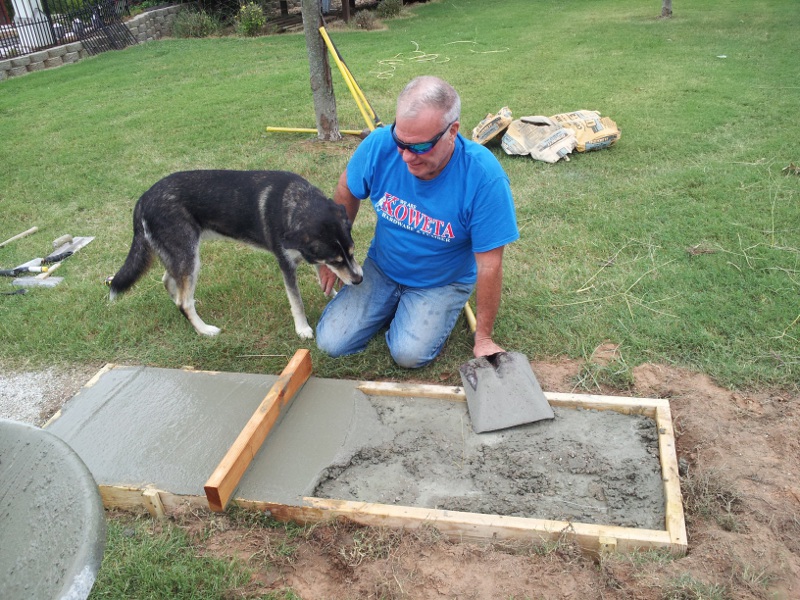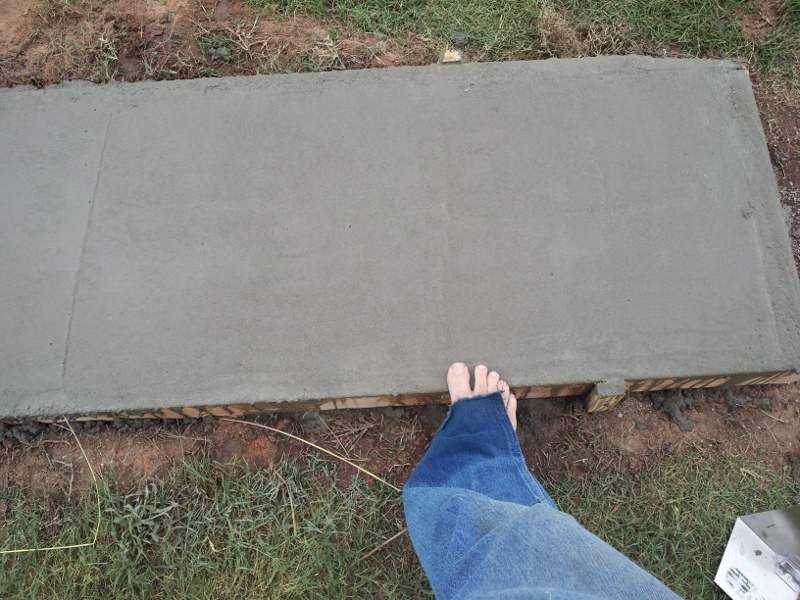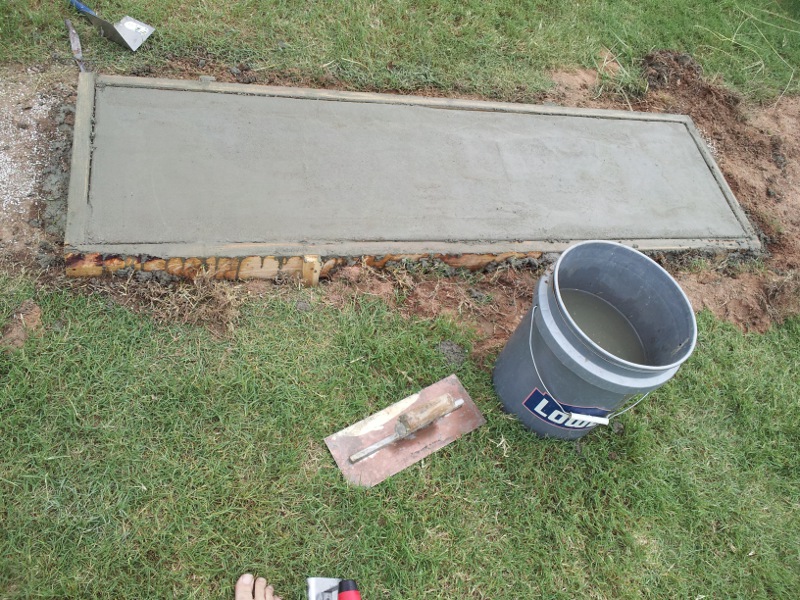Dennis has a “Split Jaw Crossing” that you’re supposed to be able to drive vehicles and such across, but it would bend a lot on the rather squishy sandy ground, so we decided to make a concrete pad to support it. Personally, I would have set a 3/4 inch board into the top of the form to make a recess for regular track to hide from vehicle wheels.
Stan told us that an 80 pound bag of concrete mix makes a cubic foot. Being a little suspicious of Stan’s information, we asked the guy at the local ACE hardware, and he agreed.
Emboldened with this information, we built our form. I measured the inside dimensions of 71 by 17 by 3.5 inches. The handy calculator told me that’s 4224.5 cubic inches. Dividing that by 12 cubed gives me 2.44 cubic feet. 2 1/2 bags.
After a hurried trip back to the hardware store for more mix, we got our pad finished.
Any of you who have worked with concrete will know why it took 4 1/2 bags, not 2 1/2: An 80 pound bag of mix makes 0.6 cubic feet. Any of you who haven’t worked with concrete, but might consider it in the future now know: an 80 pound bag of mix makes 0.6 cubic feet.

Shadow helps Dennis level the concrete while I wonder how the calculation could be so far off.

Tom resists temptation.

Finished! I rounded the corners with a sidewalk tool. Not quite right in one corner, and I don’t know that it won’t hold water.
I’ve also been casting many stones of mortar mix for making mountains. They go on the other end of the yard.
Except that the bags are half my weight and quite a task to move around, I rather like working with this stuff. I guess if I keep it up, I’ll be more able to move them.
